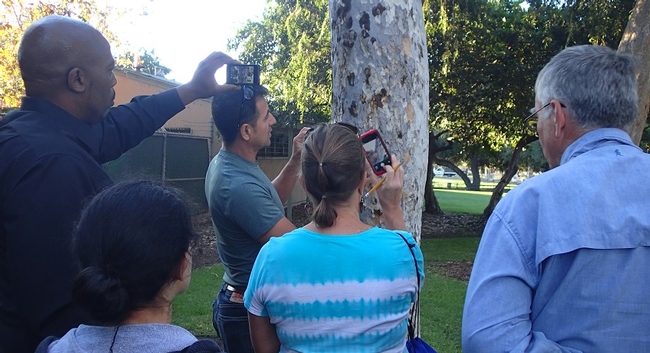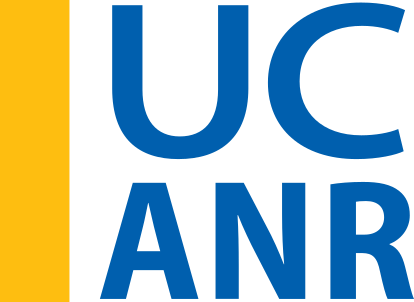- Author: Sabrina L. Drill
The reproductive host list for tree species affected by the polyphagous shot hole borer has topped 35 species as of March 2015. This list includes species that are capable of successfully growing the fungi that cause Fusarium dieback, and supporting reproduction of the polyphagous shot hole borer beetle, as confirmed by UC Extension Plant Pathologist Dr. Akif Eskalen.
Why is that important? Even though another 200+ species may be susceptible to Fusarium dieback, and may even be killed by it, these species are the ones that are capable to spread the pest to new areas, and managing this disease complex relies on stemming that spread. It's extremely important to monitor any of trees of these species that have an active infestation, and make sure to remove wood that is an active source of the beetle, whether by removing branches, or the entire tree.
The list includes 13 species native to California, including all of the major riparian tree species found in the southern region - this is where it's most likely to cause significant ecological damage. It also includes many of our most common street and residential trees, as well as a high value agricultural product, avocado.
There are also two common and problematic invasive species on the list, castor bean, and tree of heaven. This may seem like a silver lining, but because these species are so widespread, they may be active agents in vectoring the pest to new areas.
Below, UC Extension Plant Pathologist Akif Eskalen trains crew for PSHB identification in the lower Arroyo Seco.

- Author: Gary Bender
Re-"printed" from UCANR's Topics in Subtropics Blog - to see the original post, visit http://ucanr.edu/blogs/blogcore/postdetail.cfm?postnum=11722
The polyphagous shothole borers (Euwallacea sp.) that spread fungal diseases (Fusarium sp. and possibly Graphium sp.) to susceptible trees in Los Angeles County have now been found in mid and northern Orange County and western San Bernardino County. Sick and dying trees are being cut down and shredded or chipped. A lot of different species of trees are affected, including avocado, box, elder, castor bean, coast live oak, Engelmann oak, sycamore, bigleaf maple, California bay laurel, white alder, olive, peach persimmon, goldenrain, mimosa, liquid amber and wisteria vine.
Why is this important to growers in San Diego, Riverside, Ventura and Santa Barbara counties? Because growers in San Diego County (and probably other coastal counties) are being offered free shipping by the waste disposal companies of wood chips and free spreading of the mulch in their groves. What a deal!! But wait a minute!
The problem lies in that the material I have seen is either not composted or poorly composted, because it heats up in the grove after delivery and starts steaming. This means that freshly shredded or chipped trees could very likely be spreading the borers right into their groves!
Growers should ask themselves “why are these trees in Los Angeles being cut down in the first place?” Trees are being pruned and cut down for a variety of reasons, but now that we have a new pest for which there is no control, we have to be very cautious about what we bring into our groves. Other problems that could be brought into groves include Phytophthora root rot and trunk cankers, oak root fungus, Dothierella cankers, and Asian citrus psyllid.
Growers should insist that only correctly composted mulch be brought into their groves. During the composting process the piles should be turned at least five times to allow the material on the outside of the pile to be turned into the middle for correct heating of the entire pile.



